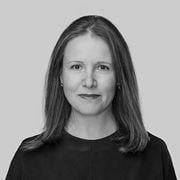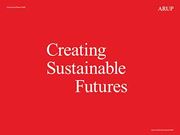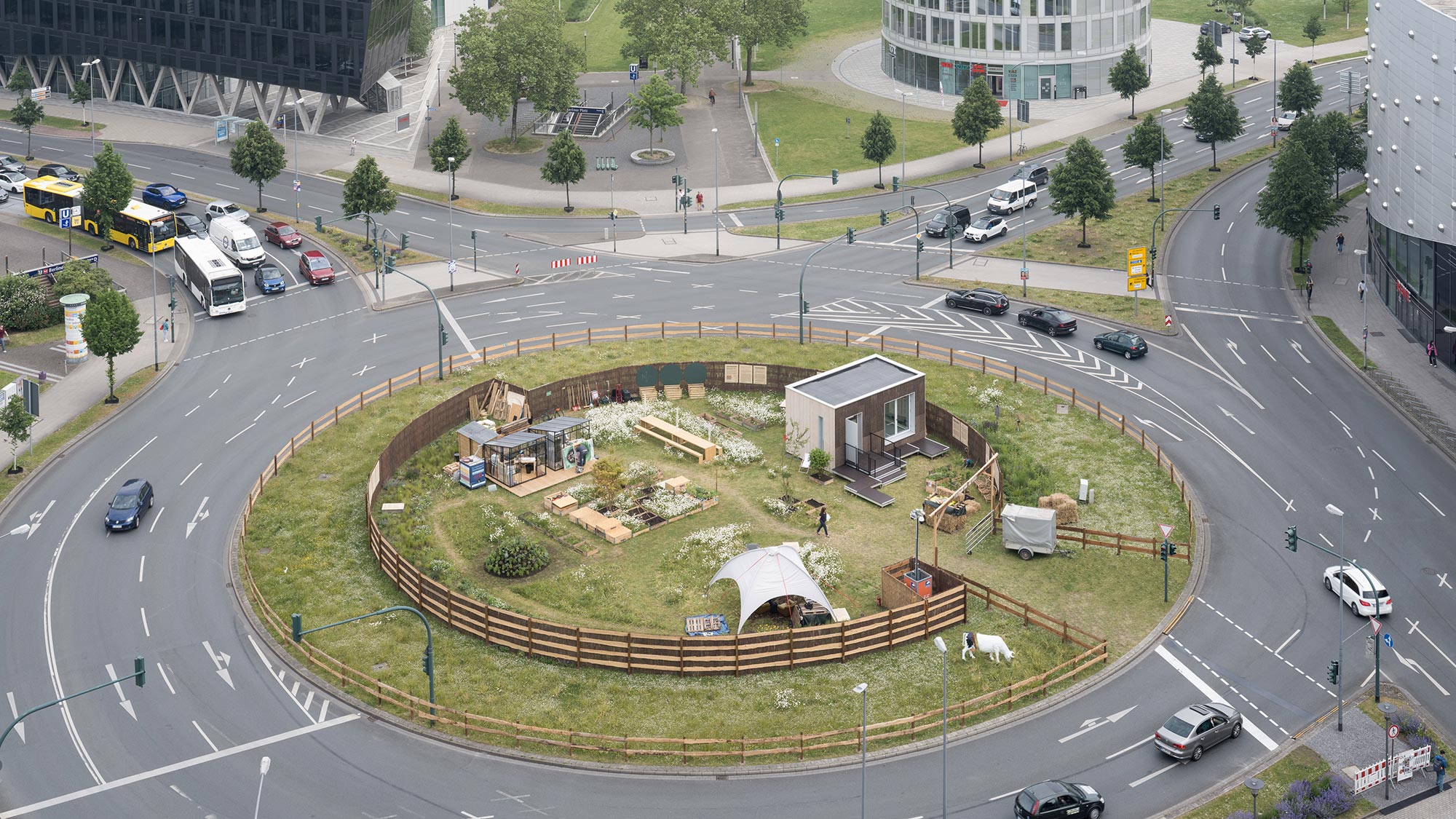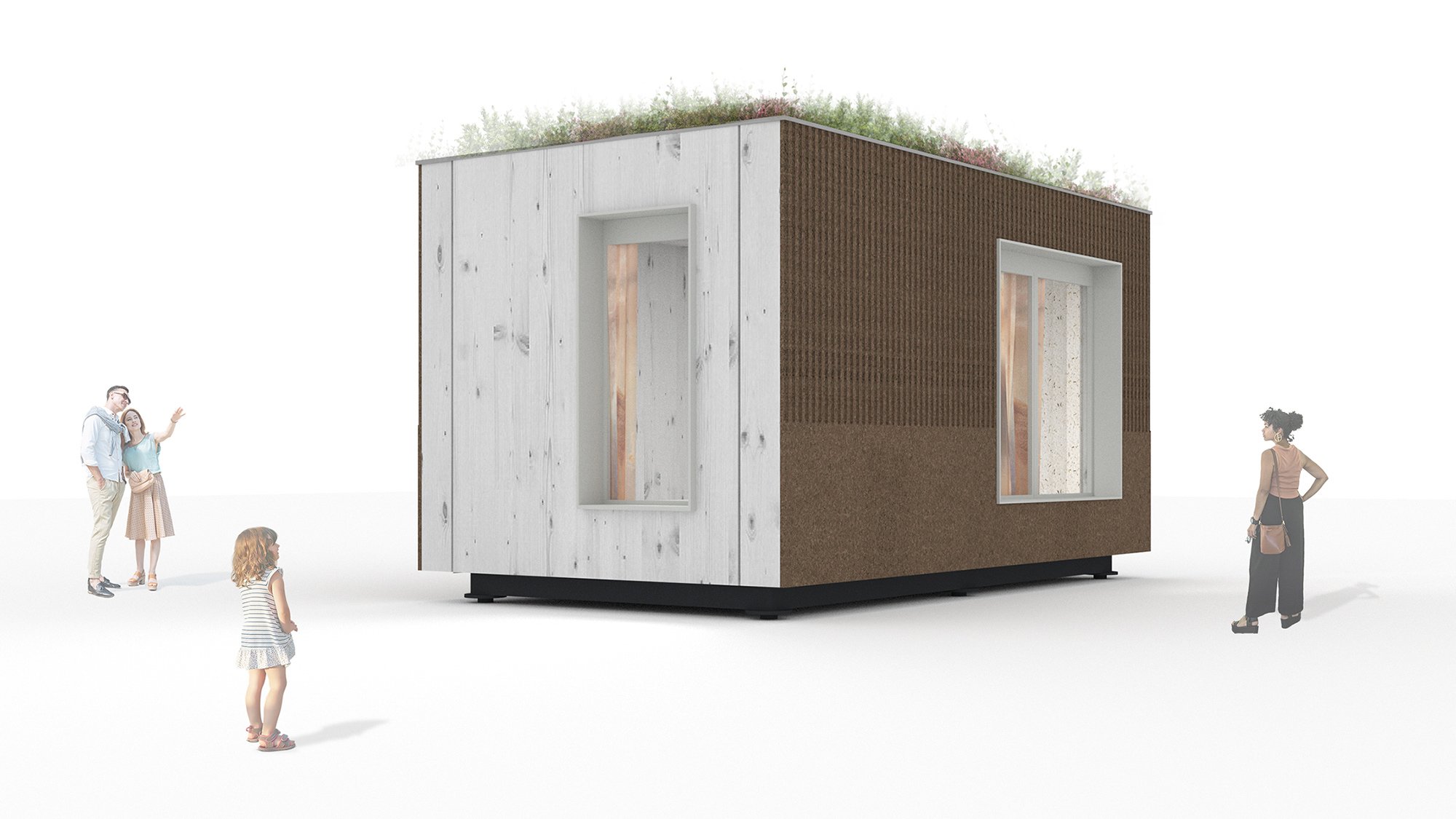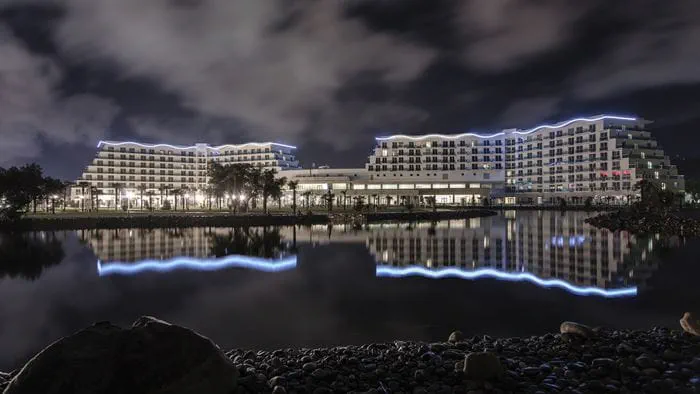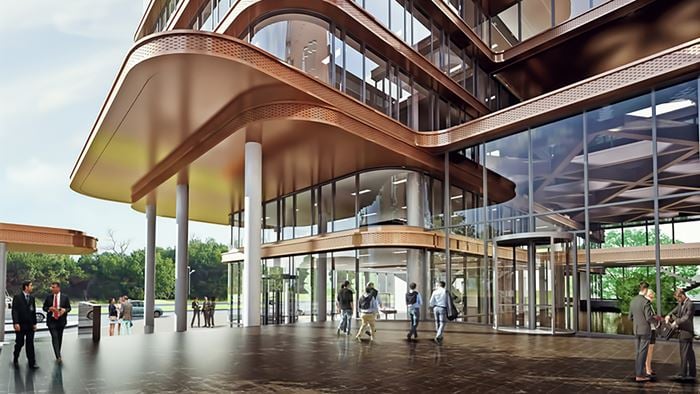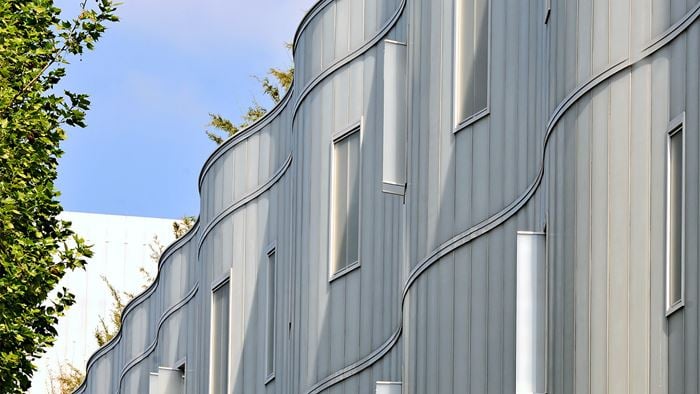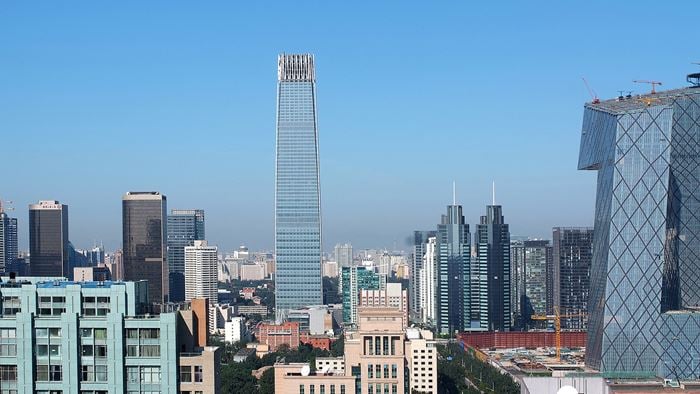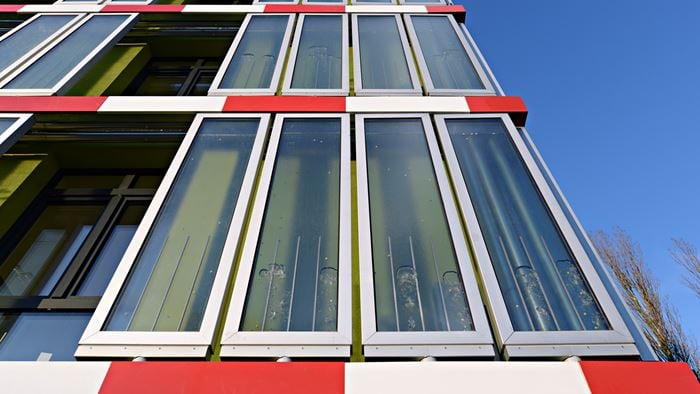The circular economy is changing the way buildings are planned, realised, operated and recycled at the end of their life cycle. Visionary products like ADPT show how the path from the linear present to the circular future can succeed with courage and creativity.
Modular multifunctionality
To realise their vision of a modular, circular building system, start-up Futur2K sought an experienced design partner familiar with the principles of circular design and construction and chose Arup. The goal is to develop a flexible, multifunctional, scalable, reversible and transportable building system. ADPT is both the name and the program, because the system can be individually adapted to the needs of the respective users and the specific location in terms of size, materials and equipment. With its open-use floor plans, ADPT offers maximum flexibility. Whether office, residential or campus buildings - everything is possible. The building system can be added to, expanded, downsized and repurposed as needed. The modules can even be easily relocated from one place to another as needed. Today's classic real estate thus becomes tomorrow's innovative "mobilie".
Tailor-made circularity
In our collaboration with Futur2K, Arup is providing architectural and engineering services for the circular building system. In addition to the design of the structural framework and the building envelope, this includes fire, sound and thermal protection, lighting design, technical building equipment, sustainability consulting and energy services. The design provides for as little high tech as necessary and as much low tech as possible. Like other buildings, the ADPT modules are made up of different components with different functions and service lives. Since the supporting structure has a much longer life than the façades and building services or the interior finishes, the individual components were separated from each other in the building design and an individual design solution was developed for each of them, allowing for customised recyclability. While the structural design focused on longevity, the façades and building services were designed with recyclability and recycling principles in mind.
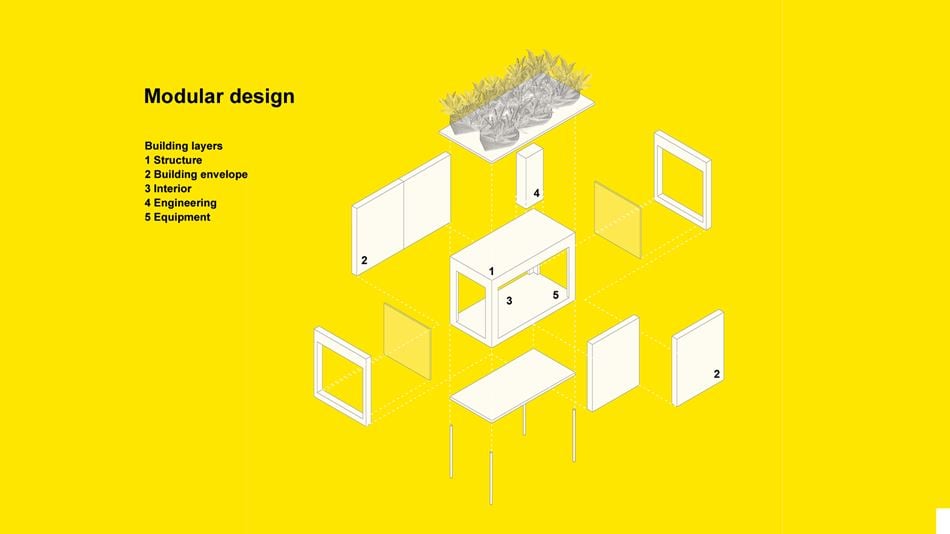
Digital Learning Loops
The ADPT system is being designed using BIM. In the search for the optimal solution, different variants can be played out together on the virtual building for each issue. The development from prototype to series production is a circular journey with many learning loops. BIM helps to draw the right conclusions from each one. In addition, the digital twin ensures transparency with regard to the type, value, circularity and ecological footprint of the materials used. All components are mapped using a model and linked to a digital material database. This digital cadastre facilitates subsequent recycling - and turns each ADPT module into a raw material depot for the next generation of building modules.
The development of the circular building system focuses on digital topics. In addition to BIM, digital configurators and logbooks are also being used. ADPT is being developed in a largely digital world.
© Arup
Circular pilot project
ADPT is the first product using the Circular Buildings Toolkit developed by Arup. The circular toolkit is a practice-oriented guidance to optimise planning processes and validate buildings in terms of their resource consumption, carbon footprint and material value.
Circular business model
ADPT's circular product design is embedded in a circular business model designed to accelerate scaling from prototype to series. In addition to being able to buy the building modules or components, customers will also be able to pay for their use in the future. This product-as-a-service model reduces resource consumption and thus relieves the burden on the environment. This is because every material that is reused does not have to be produced, thus saving raw materials, energy and greenhouse gas emissions. This not only makes sense from an ecological point of view, but also pays off economically in view of ever scarcer natural resources and skyrocketing raw material prices.
The first prototype - an urban exhibit
In a co-creative process, Futur2K and Arup, with the involvement of other experts, designed the first prototype of the modular, circular building system. It was part of the exhibition project Folkwang and the City, which took place in Essen from May 21 to August 7, 2022, on the museum's 100th anniversary. In the 22 m² prototype, visitors were able to experience ADPT's spatial quality, which was shaped by renewable and recyclable materials such as timber, cork and recycled tiles made from construction waste, as well as considerations of health, well-being and comfort for users. Following the anniversary exhibition, the circular "movable" began its journey to its next users - and now serves them as residential or campus modules.
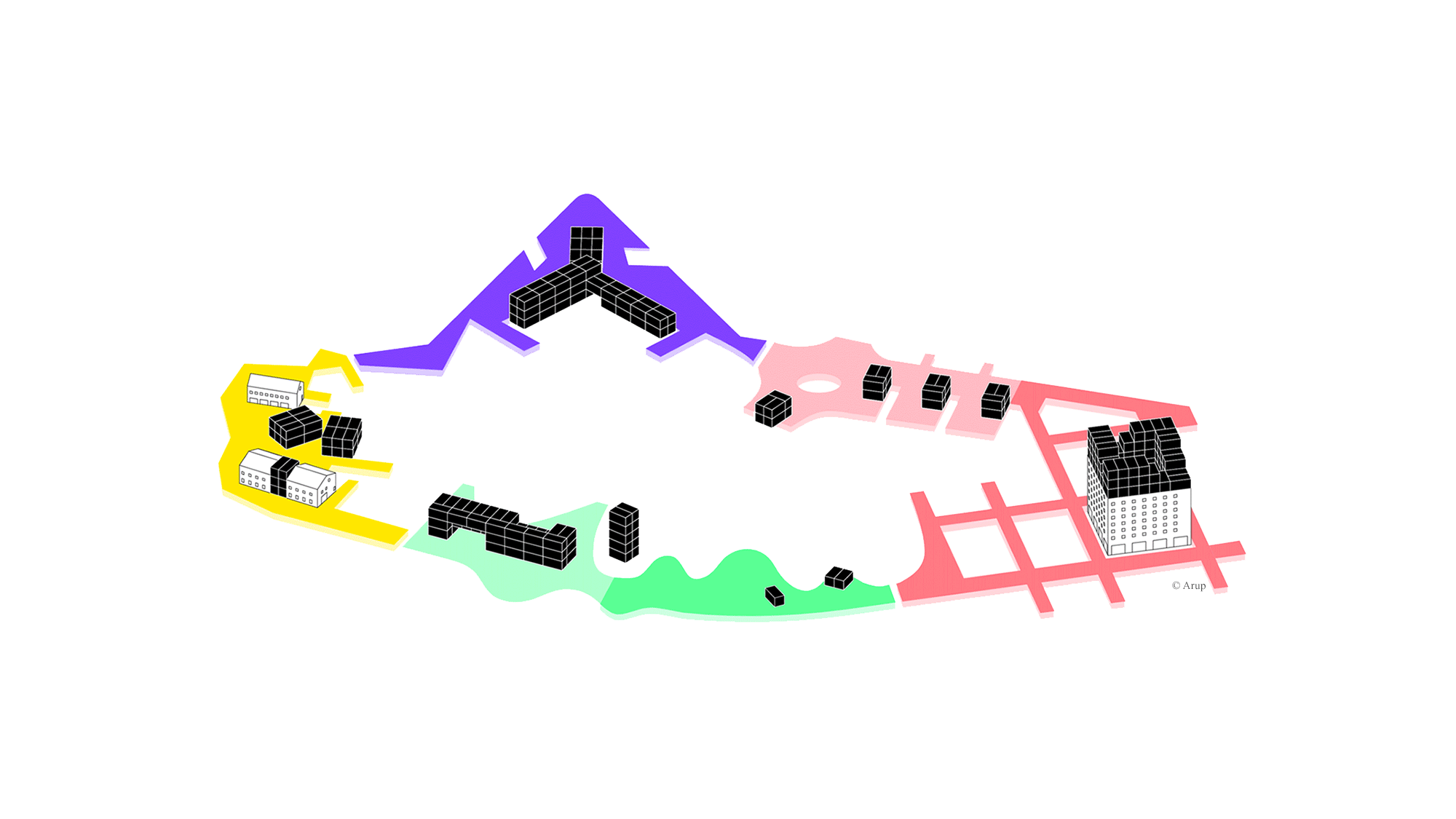 ;
;
